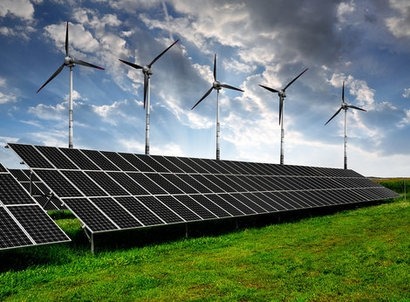
In its latest monthly "Energy Infrastructure Update" report (with data through August 31, 2023), FERC says solar provided 8,980 megawatts (MW) of new domestic generating capacity or 40.5 percent of the total. Solar capacity additions during the first two-thirds of this year were more than a third (35.9 percent) larger than for the same period last year.
Other renewable energy sources also saw growth this year. Wind provided an additional 2,761-MW (12.5 percent). With the inclusion of hydropower (224 MW), geothermal (44 MW), and biomass (30 MW), the mix of renewable energy sources accounted for the majority of new capacity additions – 54.3 percent.
The new solar capacity additions edged past those of natural gas (8,949 MW). Capacity was also provided by the new Vogtle-3 nuclear reactor (1,100 MW) in Georgia as well as by oil (32 MW) and waste heat (31 MW).
Thirty-six units of new solar came on-line in August alone, including the 148.7 MW BPL Files Solar Project in Hill County, Texas and the 100.0 MW Oak Trail Solar Project in Currituck County, North Carolina. These and other solar additions brought utility-scale (that is, greater than 1 MW) solar’s share of total available installed generating capacity in the US up to 7.2 percent. That still trails wind (11.6 percent) but is closing in on that of hydropower (8.0 percent). Taken together, the installed capacity of all renewable sources is now 28.3 percent of the total.
Solar’s strong growth during the first eight months of 2023 seems likely to continue. FERC reports that “high probability” additions of solar between September 2023 and August 2026 total 83,878 MW – an amount nearly four times the forecast net “high probability” additions for wind (21,453 MW) and over 20 times more than those projected for natural gas (4,037 MW).
The numbers for solar may prove to be conservative. FERC also reports that there may actually be as much as 214,160 MW of new solar additions in the three-year pipeline.
If just the “high probability” additions materialise, by late summer 2026, solar will account for more than one-eighth (12.9 percent) of the nation’s installed generating capacity. That would be more than either wind (12.4 percent) or hydropower (7.5 percent). Solar’s installed generating capacity by August 2026 would also surpass of oil (2.6 percent) and nuclear power (7.5 percent) combined as well as approach that of coal (13.8 percent).
In three years, natural gas would still comprise the largest share of installed generating capacity (41.7 percent) but the mix of all renewable sources (i.e., solar plus wind, hydropower, geothermal, and biomass) would total 34.2 percent and be on track to further reduce natural gas’ lead.
“Without interruption, each month solar energy increases its share of the US’s electrical generating capacity” said the SUN DAY Campaign's executive director Ken Bossong. “Now, fifty years after the onset of the 1973 Arab oil embargo, solar has grown from virtually nothing to a major part of the nation’s energy mix.”
For additional information:

